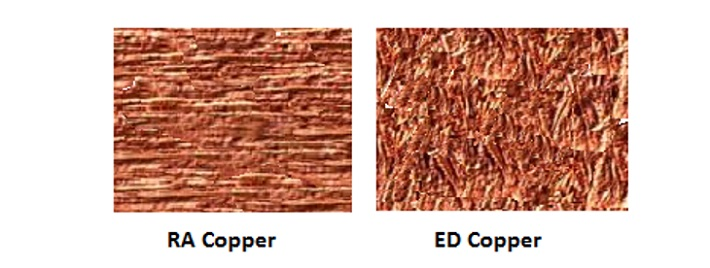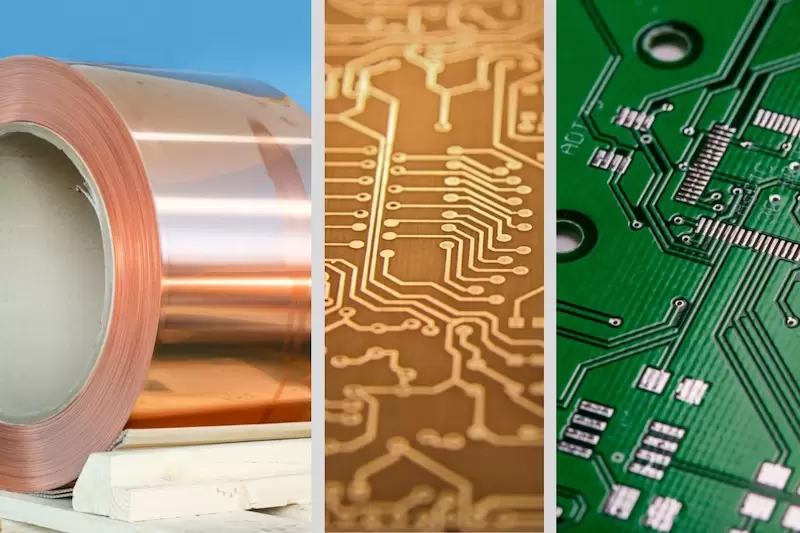We are often asked about flexibility. Of course, why else would you require a “flex” board?
“Will the flex board crack if use ED copper on it?’’
Within this article we would like to investigate two different materials (ED-Electrodeposited and RA-rolled-annealed) and observe their impact on circuit longevity. Though well understood by the flex industry, we are not getting that important message to the board designer.
Let’s take a moment to review these two types of foil. Here is the cross-section observation of RA Copper and ED Copper:
Flexibility in the copper comes from multiple factors. Of course, the thinner is the copper, the more flexible the board is. In addition to the thickness (or thinness), copper grain also affects flexibility. There are two common types of copper that are used in the PCB and flex circuit markets: ED and RA as aforementioned.
Roll Anneal Copper Foil (RA copper)
Rolled Annealed (RA) Copper has been used extensively in the flex circuits manufacturing and rigid-flex PCB fabrication industry for decades.
The grain structure and smooth surface is ideal for dynamic, flexible circuitry applications. Another area of interest with rolled copper types exists in the high-frequency signals and applications.
It has been proven that copper surface roughness can impact high-frequency insertion loss and a smoother copper surface is advantageous.
Electrolysis Deposition Copper Foil (ED copper)
With ED copper, there is a huge diversity of foils regarding surface roughness, treatments, grain structure, etc. As a general statement, ED copper has a vertical grain structure. The standard ED copper typically has a relatively high profile or rough surface as compared to Rolled Annealed (RA) Copper. ED copper tends to lack flexibility and does not promote good signal integrity.
EA copper is unsuitable for small lines and bad bending resistance so that RA copper is used for flexible PCB.
However, there is no reason to fear ED copper in dynamic applications.
However, there is no reason to fear ED copper in dynamic applications. On the contrary, it is the de facto choice in thin, lightweight consumer applications requiring high cycle rates. The only concern is careful control of where we use “additive” plating for PTH process. RA foil is the only choice available for heavier copper weights (above 1 oz.) where heavier current applications and dynamic flexing are required.
To understand the advantages and disadvantages of these two materials, it is important to understand the benefits in both cost and performance of these two types of copper foil and, just as important, what is commercially available. A designer needs to consider not only what will work, but whether it can be procured at a price that will not push the end-product out of the market pricewise.
Post time: May-22-2022


